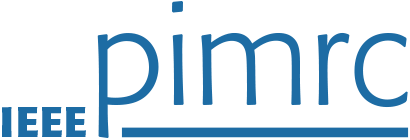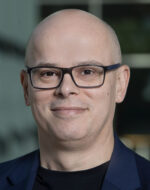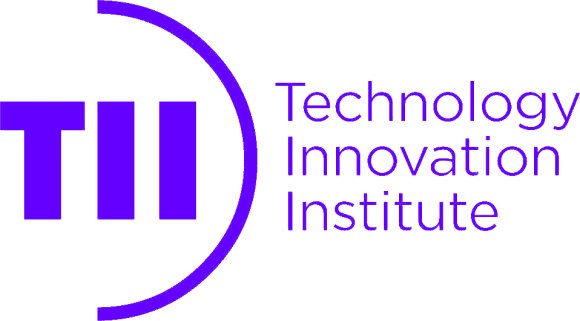List of Keynotes
Keynote 1: George V. Eleftheriades, University of Toronto, Canada
Keynote 2: Wenshuan Dang, Huawei
Keynote 3: Petar Popovski, Aalborg University, Denmark
Keynote 4: Aakanksha Chowdhery, Google Brain
Keynote 5: Jeffrey Andrews, University of Texas at Austin, USA
Keynote 6: Takehiro Nakamura, NTT Laboratories
Keynote 1: George V. Eleftheriades, University of Toronto, Canada
Date: 06 September
Time: 9:00 – 9:45
Room: Metropolitan Centre
Title: Huygens’ Metasurfaces for Precise Antenna Beamsteering and Beamshaping
Abstract: We will describe the concept of the Huygens’ metasurface, which comprises co-located electric and magnetic dipoles forming an electrically dense array of Huygens’ sources or scatterers. These engineered surfaces can be designed to control electromagnetic waves at will. Unlike traditional antenna transmit-arrays, Huygens’ metasurfaces can be made sub-wavelength thin and deprived of spurious diffraction orders while preserving excellent matching characteristics. Huygens’ metasurfaces can be used to manipulate the phase, magnitude and polarization of incident electromagnetic waves, including those from nearby elementary antennas, for a variety of applications. For example, Huygens’ omega bi-anisotropic metasurfaces enable wave refraction at extreme angles without any reflections. We will review the progress of such Huygens’ Metasurfaces for antenna beamforming and beamsteering. Cases to be discussed include high aperture efficiency/low-profile antennas, antenna aperture beamforming with simultaneous magnitude and phase control, and electronic beam steering & beamshaping. In a nutshell, Huygens’ metasurfaces can provide the platform for realizing reconfigurable intelligent surfaces (RIS) for emerging 6G wireless communication networks.
Bio:
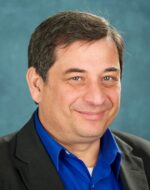 George V. Eleftheriades is a Professor in the Department of Electrical and Computer Engineering at the University of Toronto Canada where he holds the Velma M. Rogers Graham Chair in Engineering. Prof. Eleftheriades introduced the concept of using transmission lines to realize negative-index metamaterials in 2002. More recently, he pioneered Huygens’ metasurfaces, 2D analogues of metamaterials, and their antenna applications. Professor Eleftheriades received the 2008 IEEE Kiyo Tomiyasu Technical Field Award, the 2015 IEEE AP-S John Kraus Antenna Award, and the 2019 IEEE Antennas and Propagation Society’s Distinguished Achievement Award. He is an IEEE Fellow and a Fellow of the Royal Society of Canada (Academy of Sciences). His research interests include electromagnetic and optical metamaterials, metasurfaces, antennas and components for broadband wireless communications, novel antenna beam-steering techniques, far-field super-resolution imaging, radars, plasmonic and nanoscale optical components, and fundamental electromagnetic theory.
George V. Eleftheriades is a Professor in the Department of Electrical and Computer Engineering at the University of Toronto Canada where he holds the Velma M. Rogers Graham Chair in Engineering. Prof. Eleftheriades introduced the concept of using transmission lines to realize negative-index metamaterials in 2002. More recently, he pioneered Huygens’ metasurfaces, 2D analogues of metamaterials, and their antenna applications. Professor Eleftheriades received the 2008 IEEE Kiyo Tomiyasu Technical Field Award, the 2015 IEEE AP-S John Kraus Antenna Award, and the 2019 IEEE Antennas and Propagation Society’s Distinguished Achievement Award. He is an IEEE Fellow and a Fellow of the Royal Society of Canada (Academy of Sciences). His research interests include electromagnetic and optical metamaterials, metasurfaces, antennas and components for broadband wireless communications, novel antenna beam-steering techniques, far-field super-resolution imaging, radars, plasmonic and nanoscale optical components, and fundamental electromagnetic theory.
Keynote 2: Wenshuan Dang, Huawei
Date: 06 September
Time: 9:45 – 10:30
Room: Metropolitan Centre
Title: Sensing 6G through the window of 5G
Abstract: The newly completed ITU-R Framework Recommandation for IMT-2030 defines the global 6G vision, specifying 6 usage scenarios and their corresponding capabilities. Three of these usage scenarios are evolved scenarios from 5G, while the other three are new usage scenarios that would provide services beyond conventional connectivity. In fact, the extensive innovation exploration of 5G has touched all of these 6 scenarios defined by 6G after it has been put into commercial use for more than four years. This talk will share the progress of 5G development and applications in each of the 6 aspects, hoping to shed some light for the 6G research, standardization, and implementation in the coming future.
Bio:
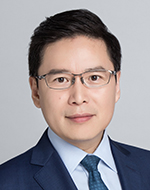 Wenshuan Dang is Director of Future Network Research Dept. at Huawei ICT Strategy & Marketing Dept. He is also the Chief Strategy Architect of Huawei. He leads research on architectural innovation in ICT, plans strategic initiative and promotes strategy implementation and communications. His current work focuses on 5G evolution and its applications, 6G research, Artificial intelligence and its applications in industries. ICT technology and sub-systems for Autonomous Driving Vehicles, Cloud solutions for established verticals. Previously he was Director of the Wireless E2E Solution Management Department, where he was responsible for planning and managing 3G, 4G and WiMax solutions. When he joined the company in 1997, Wenshuan was responsible for developing RF subsystems for 2G and 3G base stations.
Wenshuan Dang is Director of Future Network Research Dept. at Huawei ICT Strategy & Marketing Dept. He is also the Chief Strategy Architect of Huawei. He leads research on architectural innovation in ICT, plans strategic initiative and promotes strategy implementation and communications. His current work focuses on 5G evolution and its applications, 6G research, Artificial intelligence and its applications in industries. ICT technology and sub-systems for Autonomous Driving Vehicles, Cloud solutions for established verticals. Previously he was Director of the Wireless E2E Solution Management Department, where he was responsible for planning and managing 3G, 4G and WiMax solutions. When he joined the company in 1997, Wenshuan was responsible for developing RF subsystems for 2G and 3G base stations.
Keynote 3: Petar Popovski, Aalborg University, Denmark
Date: 07 September
Time: 9:00 – 9:45
Room: Metropolitan Centre
Title: Timing and Reliability towards 6G wireless systems
Abstract: High reliability and low latency were tightly coupled in 5G through the generic service of ultra-reliable low-latency communications (URLLC). As we move through research and towards specification of 6G, it emerges that the low latency should be generalized to a set of more general timing requirements, while the reliability guarantees need to be based on a proper statistical characterization and statistical learning. This talk will present the general concept of timing in wireless communication systems and networks and its relation to effective information generation, processing, transmission, and reconstruction at the senders and receivers. Starting from the focus on latency, a specific instance of timing being in the focus of 5G, we will present a statistical framework of timing requirements in wireless systems. The timing framework subsumes both latency and Age of Information (AoI) and it is applicable to various communication models, classical and quantum, as well as various applications, such as consensus or distributed learning/inference. The second part of the talk will discuss the statistical aspects of the reliability guarantees in URLLC. The focus is on the physical layer since it is fundamental to the understanding of the overall performance. We introduce the notion of statistical radio maps that can be used to offer reliability guarantees and show how can they enable the BS to obtain high-quality predictions of the reliability performance.
Bio:
Petar Popovski is a Professor at Aalborg University, where he heads the section on Connectivity and a Visiting Excellence Chair at the University of Bremen. He received his Dipl.-Ing and M. Sc. degrees in communication engineering from the University of Sts. Cyril and Methodius in Skopje and the Ph.D. degree from Aalborg University in 2005. He is a Fellow of the IEEE. He received an ERC Consolidator Grant (2015), the Danish Elite Researcher award (2016), IEEE Fred W. Ellersick prize (2016), IEEE Stephen O. Rice prize (2018), Technical Achievement Award from the IEEE Technical Committee on Smart Grid Communications (2019), the Danish Telecommunication Prize (2020) and Villum Investigator Grant (2021). He is currently the Editor-in-Chief of IEEEE JOURNAL ON SELECTED AREAS IN COMMUNICATIONS. Prof. Popovski was the General Chair for IEEE SmartGridComm 2018 and IEEE Communication Theory Workshop 2019. He authored the book “Wireless Connectivity: An Intuitive and Fundamental Guide”, published by Wiley in 2020. His research interests are in communication theory and wireless connectivity.
Keynote 4: Aakanksha Chowdhery, Google Brain
Date: 07 September
Time: 9:45 – 10:30
Room: Metropolitan Centre
Title: Pathways Language Model and Model Scaling
Abstract: Large language models have been shown to achieve remarkable performance across a variety of natural language tasks using few-shot learning, which drastically reduces the number of task-specific training examples needed to adapt the model to a particular application. To further our understanding of the impact of scale on few-shot learning, we trained a 540-billion parameter, dense Transformer language model at Google, which we refer to as Pathways Language Model (PaLM). In this talk, we discuss the system considerations and model improvements necessary to train the PaLM model across 6144 TPU v4 chips using Pathways at very high efficiency levels. Next we share how scaling the model to 540B parameters results in state-of-the-art few shot learning results across hundreds of language understanding and generation benchmarks. We will also share some of the more recent works built on top of PaLM that push the SOTA in various domains and democratize access to natural language processing.
Bio:
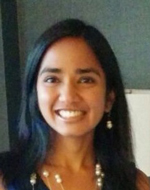 Aakanksha has led the effort on training large language models at Google Research which led to the 540B PaLM model. Aakanksha has also been a core member of the Pathways project at Google. Prior to joining Google, Aakanksha led interdisciplinary teams at Microsoft Research and Princeton University across machine learning, distributed systems and networking. Aakanksha completed her PhD in Electrical Engineering from Stanford University, and was awarded the Paul Baran Marconi Young Scholar Award for the outstanding scientific contributions in the field of communications and the Internet.
Aakanksha has led the effort on training large language models at Google Research which led to the 540B PaLM model. Aakanksha has also been a core member of the Pathways project at Google. Prior to joining Google, Aakanksha led interdisciplinary teams at Microsoft Research and Princeton University across machine learning, distributed systems and networking. Aakanksha completed her PhD in Electrical Engineering from Stanford University, and was awarded the Paul Baran Marconi Young Scholar Award for the outstanding scientific contributions in the field of communications and the Internet.
Keynote 5: Jeffrey Andrews, University of Texas at Austin, USA
Date: 08 September
Time: 9:00 – 9:45
Room: Metropolitan Centre
Title: Unlocking new capacity in 6G cellular systems via site-specific ML-aided design
Abstract: A key enabling 6G technology will be deep learning, which can unlock previously hidden system-level gains, particularly by efficiently learning custom site-specific communication techniques that are optimally adapted for each cell-site. I will present a short summary of some of my group’s recent discoveries and technologies based on deep learning (DL) that demonstrate a large potential impact in 6G. The first is a novel and practical approach for beam alignment in millimeter wave and THz bands that can achieve a phenomenal speed up — at least 10x and in some cases approaching 1000x — by sensing and exploiting unique aspects of the environment. The second is a novel methodology for downlink precoding and uplink feedback for upper midband (7-15 GHz) spectrum, that can be used for both SU-MIMO and MU-MIMO. The UEs learn near-optimal feedback patterns and the BSs learn near-optimal precoders directly from that feedback. The technique is trained and tested using Nokia’s ray tracing based channel model for 7 GHz channels. The third is a site-specific multicell optimization that rapidly learns near-optimal global settings for each base stations antenna arrays, a problem that is completely intractable using conventional techniques. It is trained and tested on AT&T’s commercial simulation platform and shows at least 2x gain in both coverage and capacity metrics relative to typical settings.
Bio:
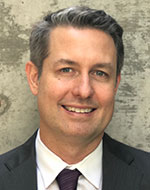 Jeffrey Andrews is the Truchard Family Endowed Chair in Engineering at the University of Texas at Austin where is Director of 6G@UT. He received the B.S. in Engineering with High Distinction from Harvey Mudd College, and the M.S. and Ph.D. in Electrical Engineering from Stanford University. Dr. Andrews is an IEEE Fellow and ISI Highly Cited Researcher and has been co-recipient of 15 best paper awards as well as the 2015 Terman Award, the NSF CAREER Award, the 2021 Gordon Lepley Memorial Teaching Award, the 2021 IEEE ComSoc Joe LoCicero Service Award, the IEEE ComSoc Wireless Communications Technical Committee Recognition Award, and the 2019 IEEE Kiyo Tomiyasu technical field award. His former students include five IEEE Fellows, 12 professors at top universities in the USA, Asia, and Europe, and industry leaders on LTE and 5G systems, on which they collectively hold over one thousand US patents.
Jeffrey Andrews is the Truchard Family Endowed Chair in Engineering at the University of Texas at Austin where is Director of 6G@UT. He received the B.S. in Engineering with High Distinction from Harvey Mudd College, and the M.S. and Ph.D. in Electrical Engineering from Stanford University. Dr. Andrews is an IEEE Fellow and ISI Highly Cited Researcher and has been co-recipient of 15 best paper awards as well as the 2015 Terman Award, the NSF CAREER Award, the 2021 Gordon Lepley Memorial Teaching Award, the 2021 IEEE ComSoc Joe LoCicero Service Award, the IEEE ComSoc Wireless Communications Technical Committee Recognition Award, and the 2019 IEEE Kiyo Tomiyasu technical field award. His former students include five IEEE Fellows, 12 professors at top universities in the USA, Asia, and Europe, and industry leaders on LTE and 5G systems, on which they collectively hold over one thousand US patents.
Keynote 6: Takehiro Nakamura, NTT Laboratories
Date: 08 September
Time: 9:45 – 10:30
Room: Metropolitan Centre
Title: 5G evolution and 6G
Abstract: Commercial 5G services have been launched globally. Study and development for technologies toward the evolution of 5G are ongoing, taking into account issues in early 5G services and emerging market needs. In parallel, research focused on technologies and services for 5G evolution and 6G is accelerating throughout the world. This presentation will explain NTT DOCOMO’s views on 5G evolution and 6G as well as our latest activities for them.
Bio:
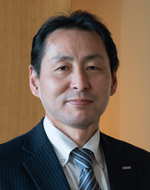 Mr. Takehiro Nakamura joined NTT Laboratories in 1990. He is now Chief Standardization Officer in NTT DOCOMO, Inc.
Mr. Takehiro Nakamura joined NTT Laboratories in 1990. He is now Chief Standardization Officer in NTT DOCOMO, Inc.
Mr. Nakamura has been engaged in R&D and the standardization activities for advanced radio and network technologies of W-CDMA, HSPA, LTE/LTE-Advanced, 5G and 6G, and engaged in strengthening inter-industry collaboration. Mr. Nakamura has been contributing to standardization activities in 3GPP since 1999, including as vice chair and chair of 3GPP TSG-RAN from 2005 to 2013. He has also been the Acting Chairman of Strategy & Planning Committee and the leader of Millimeter wave Promotion Ad Hoc of 5G Mobile Communications Promotion Forum(5GMF), the leader of Cellular System Task Group of ITS Info-communications Forum, the leader of White Paper Subcommittee in Beyond 5G Promotion Consortium in Japan and the Board member of 5G-ACIA.
